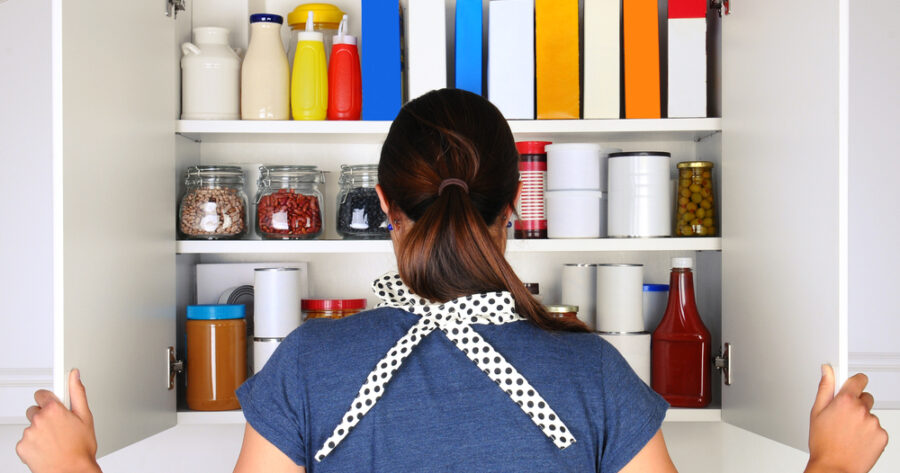Shopping smart starts at home, and knowing how to “shop your pantry” can make a big difference. This simple approach helps reduce grocery bills and makes sure you use food you already have. With a little planning and creativity, shopping your pantry helps you save money, waste less, and create satisfying meals without frequent trips to the store.
Understand What It Means to “Shop Your Pantry”
Shopping your pantry involves taking a detailed look at what you already have before planning meals or making a shopping list. Many times, we overlook food in our cabinets, freezer, or fridge that could be used before buying more. This practice isn’t just about saving money; it’s about using resources wisely, minimizing waste, and helping the environment. By focusing on pantry items first, you make the most out of what you’ve already spent on food.
Start by doing a pantry inventory, which includes going through your cabinets, fridge, and freezer. Make a list of what you have, noting things that are close to expiration. This gives you a clear picture of what you can use in your meals right away and what you may need to replace soon.
Plan Meals Around What You Already Have
Meal planning is key to making shopping your pantry effective. Instead of starting with new recipes or buying ingredients on impulse, base your meals on the items already in your pantry. For example, if you have pasta, canned tomatoes, and beans, you can make a pasta dish or soup. Have some leftover rice and veggies? Consider making a stir-fry or fried rice.
When planning, aim for flexibility. You don’t need a set-in-stone meal plan; instead, choose a few main ingredients and work from there. This approach also allows you to use pantry items in different ways. Beans can be part of a salad, soup, or wrap. Rice can be a side dish, part of a casserole, or even a breakfast bowl. Thinking creatively about each item prevents the need for extra grocery trips and keeps your cooking exciting.
Make Use of Leftovers and Frozen Foods
Incorporating leftovers and frozen foods into your meal planning is another way to cut down grocery costs. Leftovers can be transformed into new dishes, making the most of every bit of food. For instance, cooked chicken can be added to a salad, made into tacos, or mixed into pasta. The goal is to avoid throwing food away by giving it a new purpose in another meal.
Frozen foods, like vegetables, fruits, or proteins, can be as nutritious as fresh ones and last longer. Keeping frozen produce on hand is convenient and ensures you have options when fresh items are running low. A bag of frozen broccoli, for instance, can become a side dish, an addition to pasta, or part of a soup. By turning to frozen foods, you can stretch your pantry ingredients even further.
Create a System to Organize and Track Your Pantry
An organized pantry helps make shopping your pantry an easy habit. If you can see what you have, you’re more likely to use it. Arrange items by type and make sure older products are at the front, so they get used first. Labeling containers and using clear bins can also make a big difference, especially for things like grains, beans, and snacks that come in bulk.
Consider keeping a simple tracking list on the fridge or a kitchen app to help you remember what you have and what’s running low. This way, you avoid accidentally buying items you already own and reduce clutter. A well-organized pantry also makes meal planning faster and easier since you know exactly what’s available.
Buy Less by Using More of What You Already Own
The ultimate goal of shopping your pantry is to buy less and use what you already own. After doing an inventory and planning meals, you’ll find you can skip buying certain items each week. This doesn’t mean you’ll stop grocery shopping completely, but it allows you to make more targeted purchases based on gaps in your pantry.
By focusing on using your pantry items, you become more intentional about food purchases. You’re not just shopping for what you think you need; you’re buying items that complement what you already have. This shift reduces spending, saves time, and creates more space in your kitchen.
Start Small and Enjoy the Savings
Shopping your pantry may take some adjustment at first, but the savings and satisfaction make it worthwhile. Begin by taking inventory, organizing your space, and planning meals around items you already own.
Soon, you’ll find yourself with fewer grocery trips, lower bills, and meals that feel both practical and rewarding. Embrace the habit of shopping your pantry, and watch your grocery savings grow while wasting less food.
